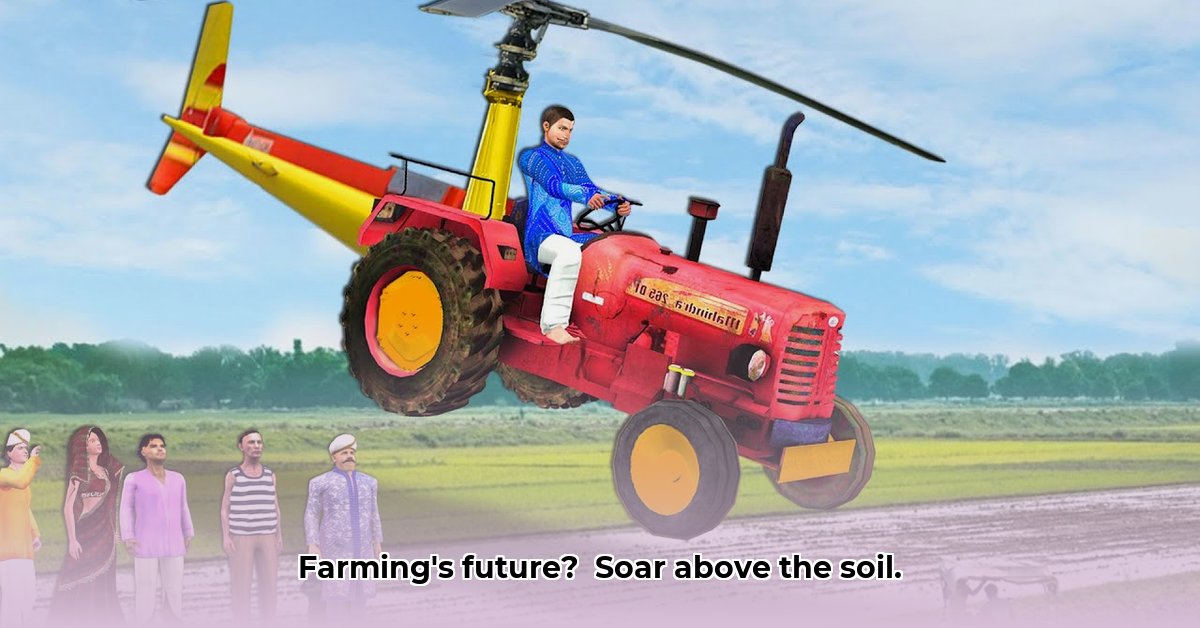
Imagine a farmer, not wrestling with a tractor in a muddy field, but effortlessly overseeing the precise application of crop treatments from above. This is the reality of aerial application, a rapidly evolving sector transforming how we grow food. This article delves into the world of "flying tractors," focusing on their potential to boost efficiency and address sustainability challenges in agriculture. We'll explore the advantages, the environmental considerations, and the technological innovations shaping the future of aerial farming. Learn more about the advancements in autonomous tractors.
The Current State of Aerial Farming
Aerial application, primarily using airplanes like those manufactured by Air Tractor, is a mainstay in modern agriculture, particularly for large-scale crop production. These aircraft efficiently spread fertilizers, pesticides, and other essential treatments across vast acreages. However, current methods aren't without environmental drawbacks. Traditional aviation fuel contributes to carbon emissions, while pesticide drift poses a significant threat to surrounding ecosystems.
Efficiency and Precision: The Advantages of Aerial Application
Modern flying tractors, however, are more than just planes—they're technologically advanced machines. Consider the significant time savings: a single flying tractor can cover hundreds of acres in a day, a task that could take days or even weeks using ground-based methods. This translates to considerable cost savings and potentially reduced labor needs. Furthermore, GPS and advanced sensors enable precise targeting, minimizing chemical waste. This precision reduces the overall amount of chemicals required, potentially lowering the risk of water contamination and soil degradation. "The reduction in chemical use alone has proven cost-effective and environmentally beneficial," says Dr. Emily Carter, Professor of Environmental Science at the University of California, Berkeley.
Sustainability Challenges: Addressing Environmental Concerns
Despite efficiency gains, the environmental impact of aerial application remains a critical concern. High fuel consumption contributes significantly to the carbon footprint of farming operations. While technology has minimized the issue, pesticide drift, the unintentional spread of chemicals, still poses a risk to non-target areas and wildlife. "Balancing efficiency with environmental responsibility is paramount," notes Mr. John Miller, CEO of Air Tractor. "We're actively investing in sustainable solutions."
Technological Advancements: Towards a Greener Future
Fortunately, innovation is driving change. Research into alternative fuels, including biofuels and even electric propulsion systems, is gaining momentum. The development of more fuel-efficient aircraft designs and advanced sensor systems for even more precise application are also key areas of focus. Drones are also playing an increasingly important role, particularly for smaller, highly targeted treatments. Autonomous or semi-autonomous flying tractors are on the horizon, promising further enhancements in efficiency and safety.
Policy and Regulation: Shaping Sustainable Practices
Government policies and regulations are instrumental in shaping a sustainable future for aerial application. Incentive programs, such as tax breaks or subsidies, can encourage the adoption of cleaner fuels and more environmentally friendly technologies. Comprehensive regulations balancing innovation with environmental protection are crucial. Clear safety guidelines and assessments of environmental impacts are vital to prevent misuse and negative consequences.
Stakeholder Perspectives: A Collaborative Approach
The success of sustainable aerial application hinges on collaboration. Manufacturers need to continue developing eco-friendly aircraft, while operators must adopt best practices and invest in advanced technologies. Governments must establish supportive regulations and encourage innovation. Consumers, too, play a critical role by demanding sustainably produced food products, creating a market incentive for environmentally conscious practices.
Future Outlook: The Long-Term Potential
Flying tractors are not merely a trend but a key component of the future of agriculture. As technology progresses and collaboration strengthens, these aerial workhorses will likely become increasingly essential for efficient and sustainable food production globally. The future of farming, quite literally, may take flight.
Key Takeaways:
- Aerial application significantly increases efficiency in farming, reducing time and resources needed.
- Technological advancements offer solutions to the environmental challenges associated with aerial spraying, including fuel consumption and pesticide drift.
- Successful implementation requires collaboration among manufacturers, farmers, governments and consumers to ensure both efficiency and sustainability.